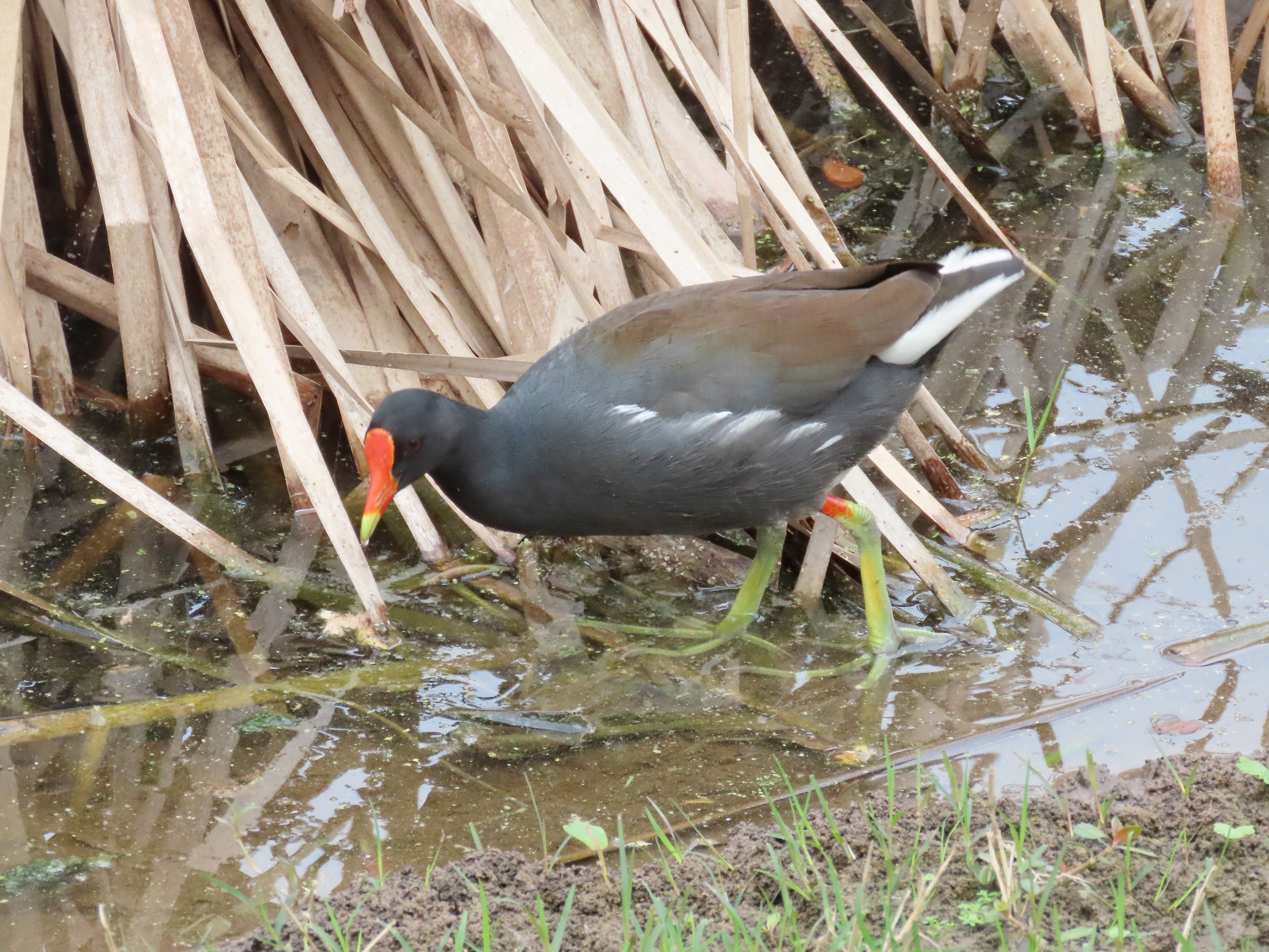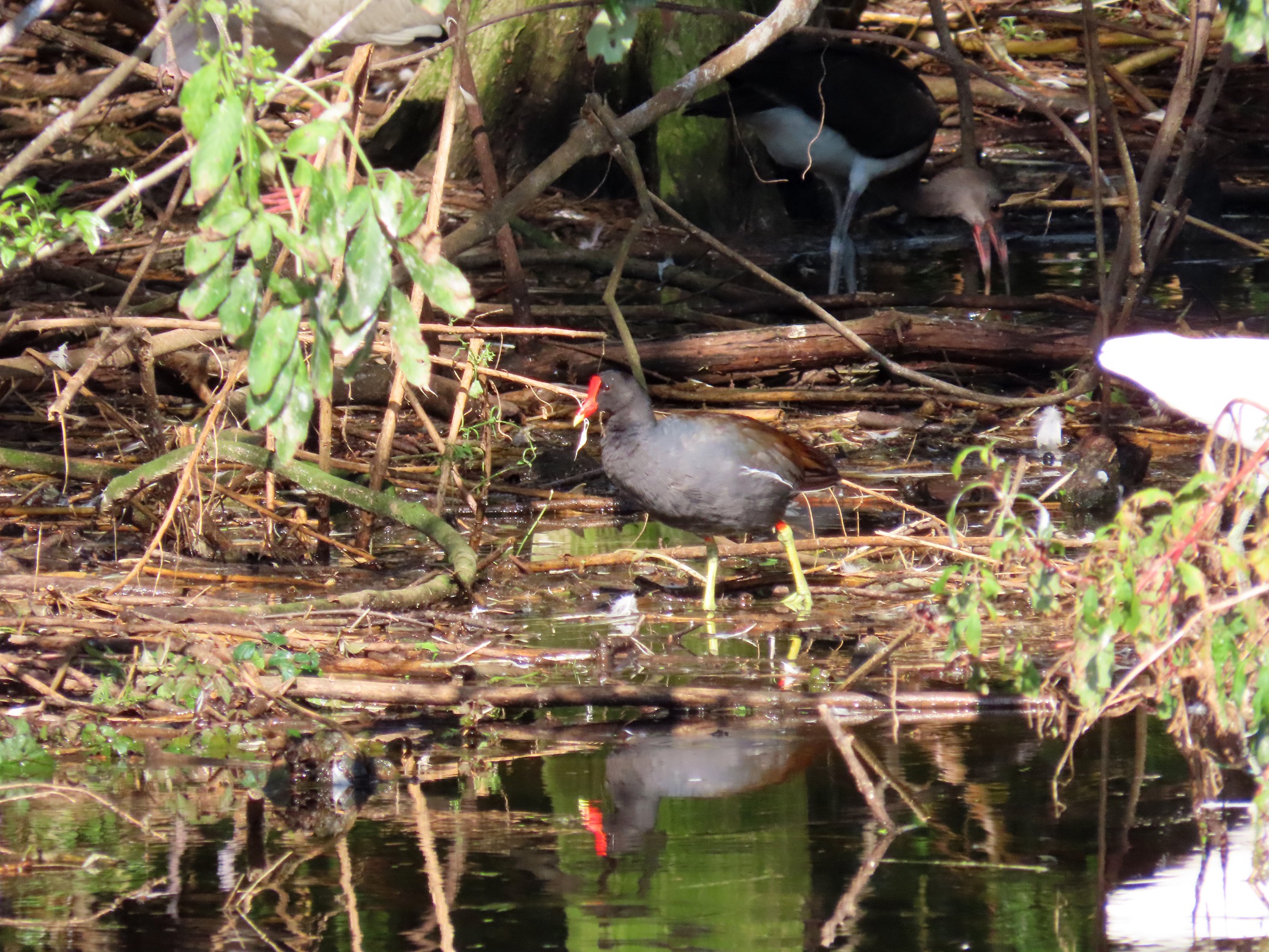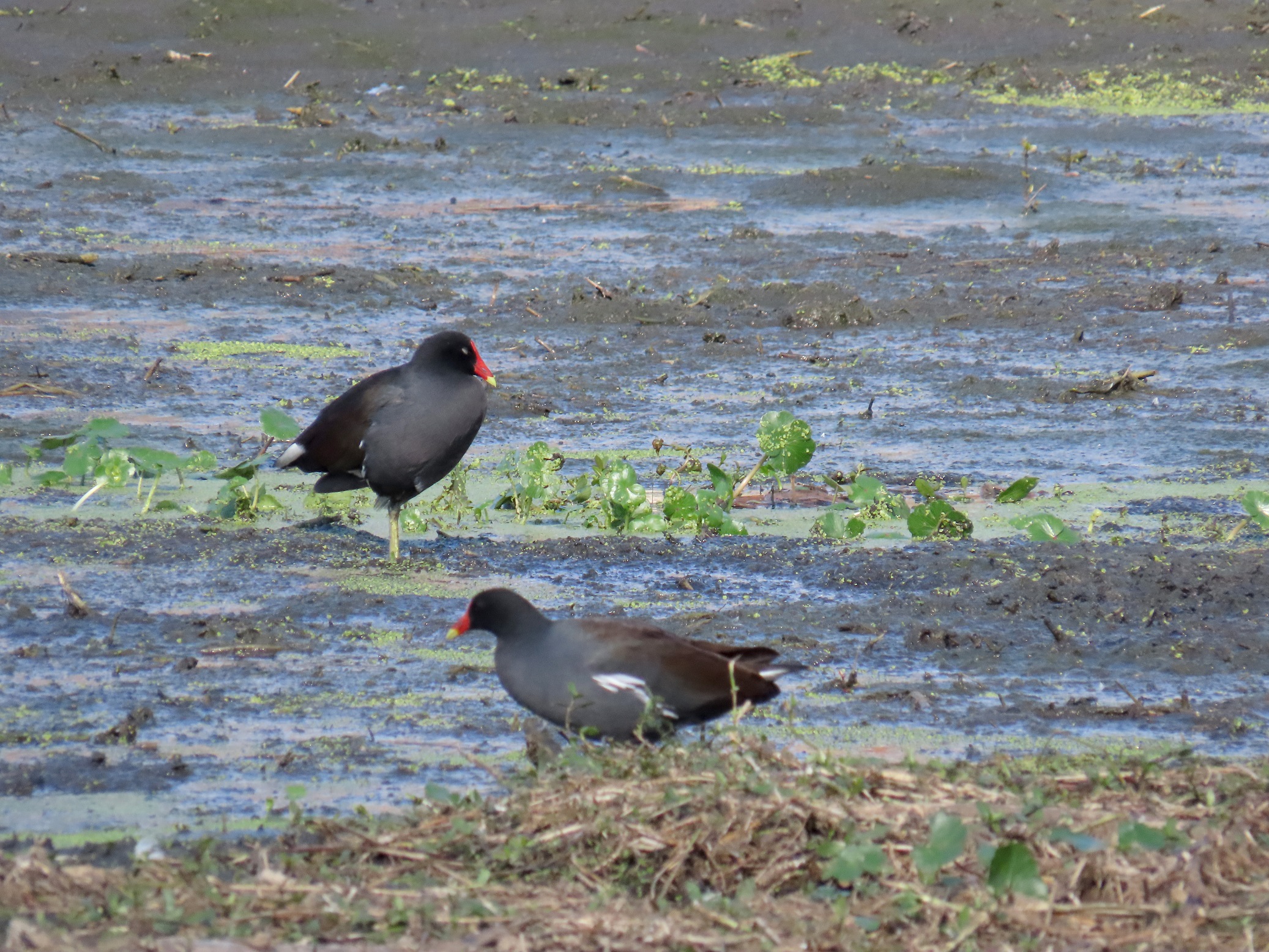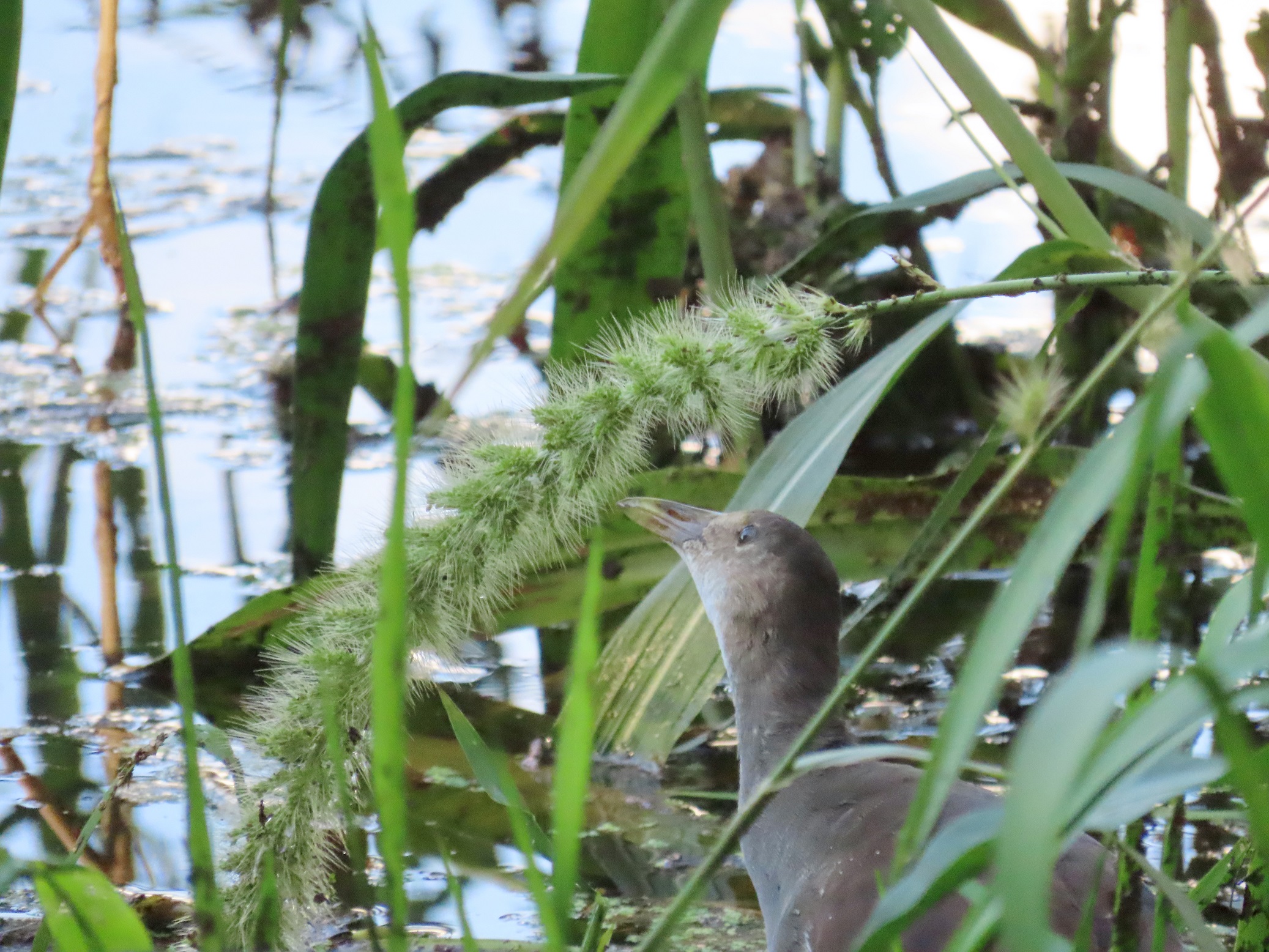




This week for Flora and Fauna Friday it’s the maniac of the marsh, the hysterical hen of the moor, the Common Gallinule (Gallinula galeata).
The Common Gallinule, also known as the Common Moorhen, is a curious bird found year-round in the Lowcountry of South Carolina. They inhabit shallow, still, densely vegetated freshwater and brackish wetlands. They’re especially common in rice fields, tidal impoundments, and weedy ponds where they forage along the margins between marsh reeds and open water for seeds, arthropods, and aquatic vegetation. Gallinules are just as apt to tread open water as they are to walk along shorelines, clamor over hummocks, or weave between reeds. The Common Gallinule is duck-like in character but, don’t let that fool you. It’s actually a member of the Rail family, Rallidae. Like other Rails it has a stocky body, a neck that’s longer than it looks, and sturdy, long legs. Common Gallinules have a pretty generalist lifestyle for a Rail. That makes them one of our more numerous Rail species in the Lowcountry and definitely the easiest Rail to lay eyes on!
The Common Gallinule’s plumage is a matte blue-black across much of its body, which blends into a rich walnut-brown on the wings. This dark, muted plumage is contrasted by a white streak down the flank and white undertail feathers divided by a black central streak. Atop their head is a scarlet-red bill bleeding up into a uniform red shield on their forehead and tapering down to the bone-yellow tip of their short, sharp, and stout bill. Holding up their bulky body are long, robust, and chartreuse-green legs which extend, uncannily, into slender toes as long as their shins! Common Gallinules use these elongated toes both as snowshoes for walking over soft mud and floating vegetation as well as paddles for poling across shallow water. Common Gallinules have two similar looking and closely related species here in South Carolina, the scarce Purple Gallinule (Porphyrio martinicus) and the prolific American Coot (Fulica americana). Purple Gallinules are quite similar in appearance to Common Gallinules but prefer freshwater ponds with dense mats of floating vegetation. They have yellow legs, iridescent plumage that blends from indigo-blue to green, and a sky-blue shield on their forehead. American Coots prefer more open waters and lakes where they flock in rafts. Coots are also solid black on the body, with a heavier neck and head, a white bill with a black tip, and lobed toes. Common Gallinules, alongside their Purple and their Cootish cousins, are gamebirds in the state of South Carolina with hunting seasons in fall and winter.
Common Gallinules have many curious behaviors. Firstly, their calls are like nothing else. Gallinule calls are like the cackling laughter of a mad man, a maniac floundering in the marsh. Often it begins as a horse-like whinny or a dry chuckle that slows into a choking, chortle of harrowing, unhinged laughter. Other times only single, simple utterances are barked, squeaked, groaned, or cooed with a lonely echo off the water. Like many Rails, Common Gallinules have a triangular tail with white undertail feathers, which they oft flick. This behavior serves as a signal of danger; both to the other birds in line of sight and to the would-be predator, letting everyone know that this bird is aware it’s being watched. Conversely, when startled, Gallinules take explosive action. Rather than flying up and away like a duck or diving out of sight like a grebe, Gallinules bust out into a sprint! They flail their wings rapidly to lift their tubby frame off the water as they make a mad dash towards the nearest clump of cover, slapping their long toes to run across the surface of the water.